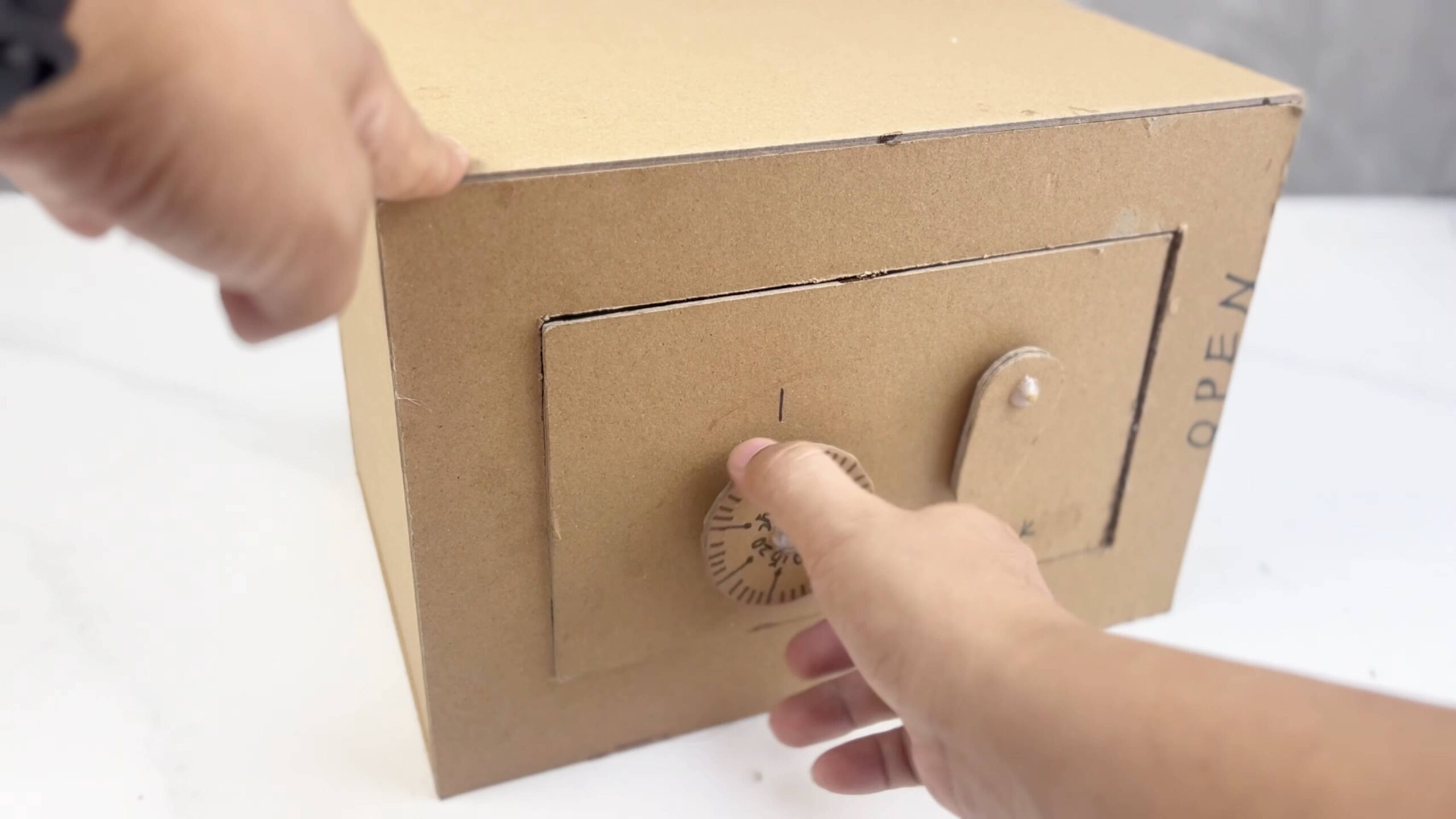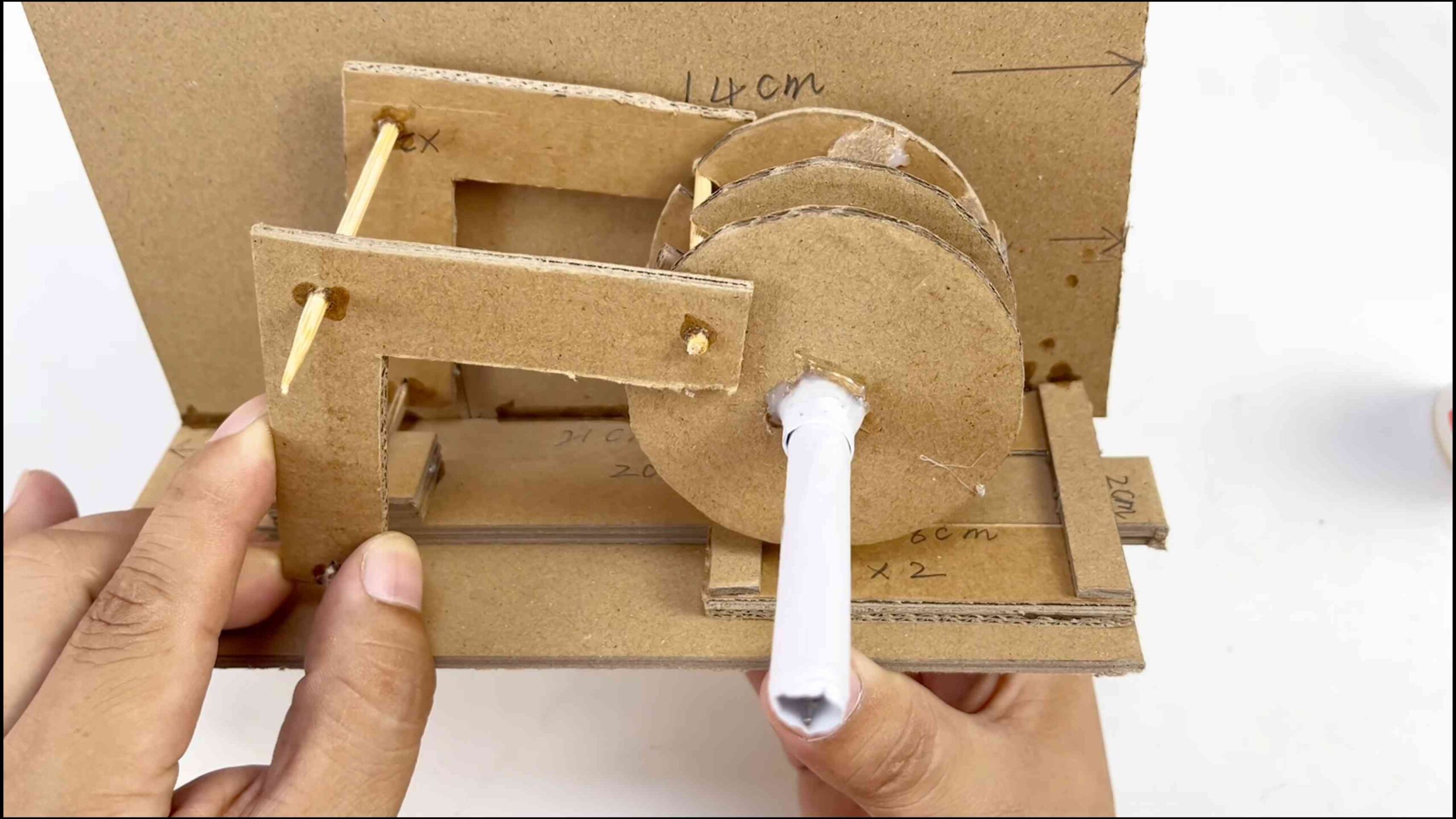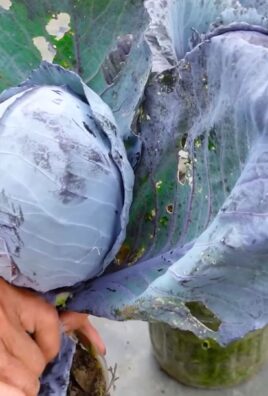DIY cardboard safe: Ever dreamt of having a secret hiding place, just like in the movies? I know I have! There’s something undeniably thrilling about the idea of concealing your treasures in plain sight. While elaborate vaults might be out of reach, I’m here to show you how to create a surprisingly effective and fun DIY cardboard safe right at home.
The concept of hidden compartments and secret boxes has been around for centuries. From hollowed-out books to cleverly disguised furniture, people have always sought ways to protect their valuables. This DIY project taps into that age-old desire for security and ingenuity, but with a modern, eco-friendly twist.
In today’s world, where privacy and security are increasingly important, having a discreet place to store small valuables or sentimental items can provide peace of mind. Whether you want to keep your spare cash away from prying eyes, safeguard precious jewelry, or simply have a fun project to do with the kids, this DIY cardboard safe is the perfect solution. It’s inexpensive, customizable, and surprisingly effective. Plus, you’ll be recycling cardboard, which is a win for the environment! So, grab your cardboard boxes, and let’s get started on building your very own secret safe!

DIY Cardboard Safe: Protect Your Treasures on a Budget!
Hey everyone! Ever wanted a cool, secret place to stash your stuff, but didn’t want to break the bank? Well, I’ve got the perfect DIY project for you: a cardboard safe! It’s surprisingly sturdy, fun to build, and a great way to keep your valuables hidden in plain sight. Plus, it’s a fantastic project to do with kids! Let’s get started!
What You’ll Need:
* Cardboard Boxes: You’ll need a few different sizes. A large, sturdy box for the main body of the safe, a medium box for the door, and some smaller boxes for internal compartments and reinforcement. Think about the size of the items you want to store when choosing your boxes. Cereal boxes, shipping boxes, or even appliance boxes can work!
* Craft Knife or Box Cutter: Be super careful with this! Always cut away from yourself and use a cutting mat or protected surface.
* Ruler or Measuring Tape: Accuracy is key for a smooth-functioning safe.
* Pencil or Marker: For marking your cuts and measurements.
* Hot Glue Gun and Glue Sticks: This is your best friend for quick and strong bonds.
* Packing Tape: For extra reinforcement and securing larger sections.
* Hinges: Small metal or plastic hinges for the door. You can find these at most hardware stores or even repurpose them from old furniture.
* Locking Mechanism: This can be anything from a simple latch and padlock to a more elaborate combination lock. I’ll show you a few options!
* Optional: Paint, wrapping paper, fabric scraps, or other decorative materials to camouflage your safe.
* Optional: Magnets and metal plates for a magnetic locking system.
* Optional: Small screws and a screwdriver (if using metal hinges).
* Optional: Drill (if using screws for hinges or a more complex locking mechanism).
Planning Your Safe:
Before you start cutting, take some time to plan out your safe. Consider these factors:
* Size: How big do you need your safe to be? Measure the items you want to store inside to determine the internal dimensions.
* Door Placement: Where do you want the door to be located? Front, side, or even top-opening?
* Internal Compartments: Do you want shelves, drawers, or other compartments inside?
* Locking Mechanism: What type of lock do you want to use? A simple latch, a padlock, a combination lock, or something more creative?
* Camouflage: How well do you want to hide your safe? Will it blend in with its surroundings, or will it be a decorative piece?
Once you have a good idea of what you want, sketch out a rough design on paper. This will help you visualize the finished product and avoid mistakes.
Building the Main Body:
This is the foundation of your safe, so make sure it’s sturdy!
1. Prepare the Box: Choose your largest and sturdiest cardboard box. If it has flaps, fold them inwards and secure them with packing tape to create a closed box. This will add extra strength.
2. Cut the Door Opening: Decide where you want the door to be. Using your ruler and pencil, mark the outline of the door on the box. Remember to leave a small border (about 1-2 inches) around the edges for structural integrity.
3. Carefully Cut the Opening: Using your craft knife or box cutter, carefully cut along the marked lines. Be patient and use multiple light passes rather than trying to cut through the cardboard in one go. This will give you a cleaner cut.
4. Reinforce the Edges: Cut strips of cardboard from your scrap boxes and glue them around the inside edges of the door opening. This will reinforce the opening and prevent it from collapsing. Use hot glue and packing tape for extra strength.
Creating the Door:
Now, let’s build the door that will protect your treasures!
1. Cut the Door Panel: Choose your medium-sized box and cut out a panel that is slightly larger than the door opening you created in the main body. This overlap will ensure a snug fit.
2. Reinforce the Door: Just like with the door opening, reinforce the door panel by gluing strips of cardboard around the edges. This will make the door more rigid and resistant to bending.
3. Attach the Hinges: Decide where you want to place the hinges. Mark the positions on both the door and the main body. If you’re using metal hinges, you can either glue them on with hot glue (for a less permanent solution) or screw them in using small screws and a screwdriver (for a more secure attachment). If you’re using plastic hinges, hot glue is usually sufficient.
4. Test the Door: Attach the hinges to both the door and the main body. Test the door to make sure it opens and closes smoothly. Adjust the hinges if necessary.
Implementing a Locking Mechanism:
This is where you get to be creative! Here are a few options:
* Simple Latch and Padlock: This is the easiest option. Attach a small latch to the door and the main body. You can then use a padlock to secure the latch.
* Magnetic Lock: Attach a strong magnet to the inside of the door and a metal plate to the inside of the main body, opposite the magnet. When the door is closed, the magnet will hold it shut. You can add a small handle to the door for easy opening.
* Combination Lock (Cardboard Version): This is a more advanced option. You’ll need to create a series of rotating cardboard discs with numbers or symbols on them. These discs will align with corresponding slots in the door and the main body. When the correct combination is entered, the door will open. This requires careful planning and precise cutting. I recommend searching online for tutorials on how to build a cardboard combination lock for detailed instructions.
* Sliding Bolt Lock: Cut a small slot in the door and the main body. Create a cardboard bolt that can slide through the slot to lock the door. Secure the bolt with a small piece of cardboard or a paperclip.
1. Install Your Chosen Mechanism: Follow the instructions for your chosen locking mechanism. Make sure it’s securely attached and functions properly.
2. Test the Lock: Test the lock to make sure it’s working correctly. Make any necessary adjustments.
Adding Internal Compartments (Optional):
If you want to organize your treasures, add some internal compartments!
1. Measure and Cut: Measure the inside of your safe and cut pieces of cardboard to create shelves, drawers, or other compartments.
2. Assemble the Compartments: Use hot glue and packing tape to assemble the compartments.
3. Install the Compartments: Glue or tape the compartments inside the safe.
Camouflaging Your Safe (Optional):
Now for the fun part: disguising your safe!
1. Choose Your Camouflage: Decide how you want to camouflage your safe. You can paint it to match its surroundings, cover it with wrapping paper or fabric scraps, or even decorate it to look like a book or other object.
2. Apply the Camouflage: Apply your chosen camouflage materials to the outside of the safe. Be creative and have fun!
3. Add Details: Add any details that will help your safe blend in with its surroundings. For example, if you’re camouflaging it as a book, add a title and author to the spine.
Final Touches:
1. Inspect Your Safe: Take a close look at your safe and make sure everything is secure and functioning properly.
2. Test the Lock Again: Give the lock one final test to make sure it’s working correctly.
3. Hide Your Safe: Find a good hiding spot for your safe. Make sure it’s not too obvious, but also not too difficult to access.
And that’s it! You’ve built your own cardboard safe! Now you have a secure and secret place to store your treasures. Remember to be careful when using sharp tools, and have fun with the project! I hope you enjoyed this DIY adventure!

Conclusion
So, there you have it! Creating your own DIY cardboard safe isn’t just a fun afternoon project; it’s a surprisingly effective and incredibly satisfying way to secure small valuables. We’ve walked you through the steps, highlighting the simplicity and adaptability of this ingenious method. But why is this DIY trick a must-try?
First and foremost, it’s about resourcefulness. In a world of mass-produced, often expensive security solutions, this project empowers you to create something functional and secure using readily available materials – cardboard boxes! It’s a fantastic way to repurpose those delivery boxes piling up in your garage, turning potential waste into a practical asset.
Secondly, it’s about customization. Unlike store-bought safes, your DIY cardboard safe can be tailored to your exact needs. Need a specific size to fit a particular space? No problem! Want to incorporate multiple compartments or a hidden locking mechanism? The possibilities are endless. This level of personalization ensures that your safe perfectly suits your requirements.
Thirdly, it’s about the satisfaction of creating something with your own hands. There’s a unique sense of accomplishment that comes from building something yourself, and this project is no exception. From carefully cutting and folding the cardboard to assembling the final product, you’ll be actively involved in every step of the process.
But the benefits don’t stop there. This DIY cardboard safe can also serve as a valuable learning experience, especially for children. It teaches them about problem-solving, spatial reasoning, and the importance of security. It’s a fun and engaging way to introduce them to basic engineering principles.
Now, let’s talk about variations. While the basic design we’ve outlined is a great starting point, feel free to experiment and get creative. Consider adding extra layers of cardboard for increased strength. You could also incorporate a combination lock or a magnetic closure for added security. For a more aesthetically pleasing finish, you can paint or decorate your safe with wrapping paper, fabric, or even decoupage.
Another variation involves creating a false bottom or hidden compartment within the safe. This is a great way to conceal even more valuable items. You could also add padding to the interior of the safe to protect delicate items from scratches or damage.
Remember, the key to a successful DIY cardboard safe is careful planning and precise execution. Take your time, measure accurately, and don’t be afraid to experiment. The more effort you put into the project, the more secure and functional your safe will be.
We strongly encourage you to give this DIY trick a try. It’s a fun, affordable, and surprisingly effective way to secure your valuables. And once you’ve built your own cardboard safe, we’d love to hear about your experience. Share your photos, tips, and variations with us in the comments section below. Let’s inspire each other to create even more innovative and secure solutions! Don’t forget to use the hashtag #DIYCardboardSafe when sharing your creations on social media. We can’t wait to see what you come up with! This is a fantastic way to learn about basic security principles and create a functional item using recycled materials. So, grab some cardboard, gather your tools, and get ready to build your own DIY cardboard safe!
FAQ
What kind of cardboard is best for a DIY cardboard safe?
The ideal cardboard for your DIY cardboard safe is thick, sturdy corrugated cardboard. Double-walled cardboard, often used for shipping heavier items, is even better. The thicker the cardboard, the more resistant your safe will be to tampering and forced entry. Avoid using thin, flimsy cardboard like that found in cereal boxes, as it won’t provide adequate security. If you only have thinner cardboard available, consider layering multiple pieces together to increase the overall thickness and strength. Remember to properly glue or adhere the layers together for maximum effectiveness.
How can I make my cardboard safe more secure?
There are several ways to enhance the security of your DIY cardboard safe. First, use a robust locking mechanism. Instead of relying solely on tape, consider incorporating a hasp and padlock, a combination lock, or even a magnetic closure. Second, reinforce the walls of the safe by adding extra layers of cardboard, especially around the locking mechanism and any potential weak points. Third, camouflage your safe by painting it to blend in with its surroundings or hiding it inside another object. Fourth, consider adding internal dividers or compartments to make it more difficult for someone to access the contents quickly. Finally, remember that a cardboard safe is not impenetrable. It’s designed to deter casual theft and provide a temporary layer of security.
Is a cardboard safe really effective against theft?
A cardboard safe is not a substitute for a high-security steel safe, but it can be surprisingly effective against casual theft. Its primary purpose is to deter opportunistic thieves who are looking for easy targets. The fact that the safe is locked and requires some effort to open can be enough to discourage them from attempting to break in. Additionally, the cardboard construction makes it difficult to determine the contents of the safe, which can further deter theft. However, it’s important to remember that a determined thief with the right tools could eventually break into a cardboard safe. Therefore, it’s best to use it for storing items of moderate value and to keep it hidden from plain sight.
What tools do I need to build a cardboard safe?
The essential tools for building a cardboard safe include:
* A sharp utility knife or box cutter for cutting the cardboard.
* A ruler or measuring tape for accurate measurements.
* A cutting mat or other protective surface to prevent damage to your work area.
* Strong adhesive, such as hot glue, construction adhesive, or heavy-duty tape.
* A pencil or marker for marking measurements and outlines.
* Clamps or weights to hold pieces together while the adhesive dries.
* Optional tools include a drill for creating holes for locks or hinges, sandpaper for smoothing rough edges, and paint or other decorative materials for finishing the safe.
Can I use this DIY cardboard safe for storing important documents?
While a DIY cardboard safe can provide a degree of security for important documents, it’s not ideal for long-term storage. Cardboard is susceptible to moisture, pests, and fire, which can damage or destroy your documents. If you need to store important documents for an extended period, it’s best to use a fireproof and waterproof safe specifically designed for that purpose. However, if you only need temporary storage for a short period, a cardboard safe can be a viable option, provided you take steps to protect the documents from moisture and other potential hazards. Consider placing the documents in waterproof bags or containers before storing them in the safe.
How long does it take to build a cardboard safe?
The time it takes to build a cardboard safe depends on the complexity of the design and your level of experience. A simple cardboard safe can be built in as little as an hour or two, while a more elaborate design with multiple compartments and a sophisticated locking mechanism could take several hours or even a full day to complete. It’s important to allocate enough time to the project to ensure that you can work carefully and accurately. Rushing through the process can lead to mistakes and a less secure final product.
How do I hide my cardboard safe effectively?
Hiding your cardboard safe effectively is crucial for maximizing its security. Here are some tips:
* Blend it in with its surroundings: Paint the safe to match the color of the wall or furniture it’s near.
* Conceal it inside another object: Place the safe inside an old suitcase, a hollowed-out book, or a decorative box.
* Hide it in plain sight: Disguise the safe as a common household item, such as a stack of books or a storage container.
* Choose an unexpected location: Avoid hiding the safe in obvious places like under the bed or in the closet. Consider hiding it in the attic, basement, or behind a piece of furniture.
* Keep it out of sight: Make sure the safe is not visible from windows or doorways.
What are some creative ways to decorate my cardboard safe?
Decorating your cardboard safe can make it more aesthetically pleasing and help it blend in with its surroundings. Here are some creative ideas:
* Paint it: Use acrylic paints to create a custom design or pattern.
* Wrap it in fabric: Cover the safe with fabric using glue or tape.
* Decoupage it: Apply decorative paper or images to the safe using decoupage glue.
* Add embellishments: Attach beads, sequins, buttons, or other embellishments to the safe.
* Use stencils: Create intricate designs using stencils and paint.
* Cover it with wrapping paper: Use decorative wrapping paper to give the safe a festive look.
* Camouflage it: Paint the safe to resemble a rock, a tree trunk, or another natural object.





Leave a Comment